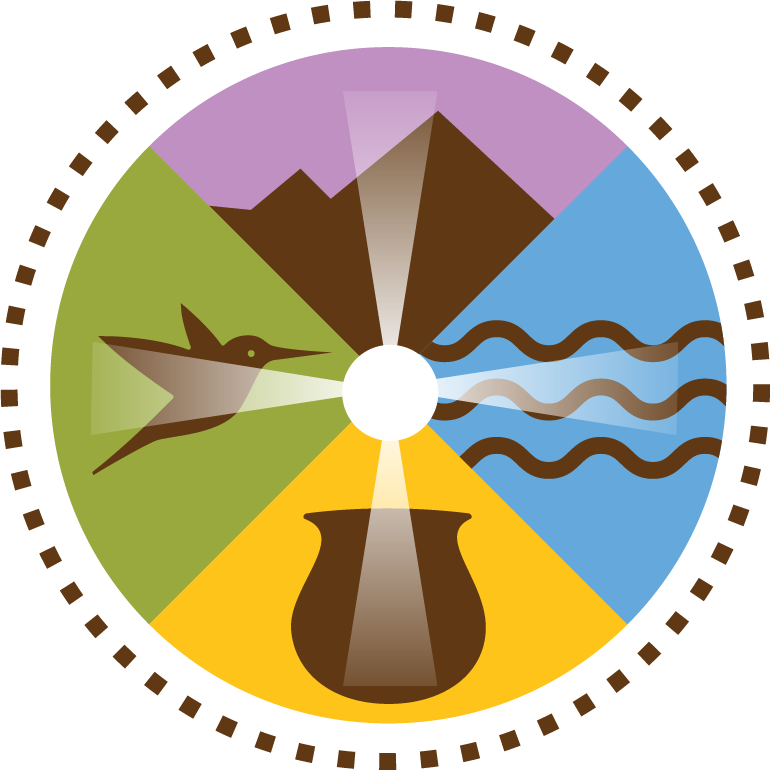
Land Acknowledgment
The Santa Cruz Valley National Heritage Area recognizes the original inhabitants of this landscape, the O’odham and the Yaqui (Yoemem), and their descendants who remain thriving on both sides of what is today the United States-Mexico border. These tribal nations traveled freely between what is now the U.S. and Mexico, roaming between water sources, food cultivation, and important landmarks, such as sacred mountains and the ocean. Without their knowledge and wisdom, the U.S. and Mexico would not be the culturally diverse places they are today.
The National Park Service describes a National Heritage Area as a place “where natural, cultural, historic and recreational resources combine to form cohesive, nationally distinctive landscapes arising from patterns of past and present human activities shaped by geography.” We know that the Indigenous peoples of this land have contributed and built the foundation for our nationally distinctive landscape. While the Santa Cruz Valley is known for being an epicenter of culture and the joining of two nations, we must think back and remember the time in which borders did not exist, before the United States and Mexico existed, remember back to when this land only knew nature and Indigenous peoples.
As we partner to preserve, promote, and celebrate the Santa Cruz Valley National Heritage Area’s rich biological diversity and thriving cultural traditions, we also honor and recognize the contributions given to us by the indigenous peoples of this land. Take with you today the reminder that you are on Indigenous land.

Traditional O’odham Basket Dancers. Photo courtesy of NPS Photos.
What
The concept of land acknowledgments is not entirely new and can be traced back to different Indigenous communities across the world. Today, land acknowledgments have become increasingly common at meetings, events, and even online platforms. It is a way of showing respect and honoring indigenous communities on the land that is being recognized. Instead of erasing the original histories of the land, acknowledgments seek to bring knowledge and recognition to those communities.
Why
Land acknowledgments hold great importance in correcting the erasure of Indigenous history. Acknowledging the Indigenous peoples of a land addresses the colonial narrative that has taken precedence to other narratives. Acknowledgments themselves are small gestures and hold less meaning than the actual relationships being built and the actions that result from the acknowledgment. While acknowledgments come in different forms, they are merely a stepping stone in the right direction towards educating oneself and others about Indigenous communities and continuously growing to support them in whatever way is appropriate.
Our Commitment to the Indigenous Community:
Through our land acknowledgment, the Santa Cruz Valley National Heritage Area commits to building stronger relationships with the tribal communities in our region, including the Tohono O’odham Nation and Pascua Yaqui Tribe. Through our work creating our management plan and feasibility study, we have begun educating ourselves about the rich history of the Indigenous peoples here and their contributions to our communities. Our goal and commitment are to educate others and bring awareness to the history and contributions of our Indigenous communities and foster a strong relationship to offer our support in whatever means necessary.
Learn more about the tribal nations within the SCVNHA by visiting www.tonation-nsn.gov and www.pascuayaqui-nsn.gov.
Support these communities by following and supporting:
- San Xavier Cooperative Farm
- Boys and Girls Club of Tucson Pascua Yaqui Clubhouse
- Old Pascua Museum & Yaqui Culture Center
- Mission Garden
- San Xavier del Bac Mission
Learn about our efforts by viewing our:
- Pueblos del Maiz Fiesta – Let’s Talk About Maiz Discussion Panel (2022)
- Yoeme Unidos Heritage Mural (2022)
- A Brief History on the San Xavier District Lecture (2022)

